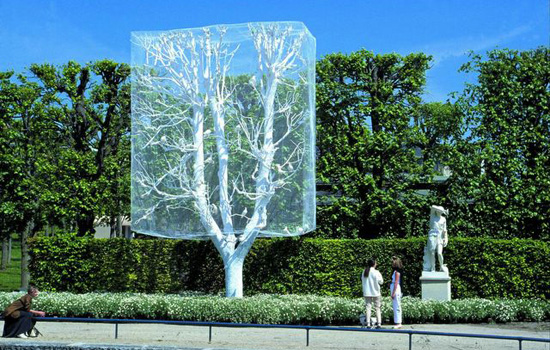John Lopez's Worst Nightmare
You know bowl season is upon us when you see families clad in Rutgers gear strolling the streets of downtown Houston.
Architectural Indigestion
Thumbs down to the new Capital One branch bank on Bagby in Midtown. It's a case in point example of why the potential of Midtown will never be realized without proper zoning. When Midtown is nothing but drive-through banks with half acre parking lots and CVSes, they should change the name from Midtown to Katy.
Open Letter to John Lopez
NOTE: I sent the following e-mail to Houston Chronicle sports columnist John Lopez in response to his Dec. 22, 2006 column, which can be found at this link: http://www.chron.com/disp/story.mpl/sports/lopez/4420145.html
John,
You wrote today that “bowls have lost their luster.” As evidence, you specifically mention four bowl matchups – 3 lesser bowls and the national championship game. Hmmm…interesting sample. True, there are lots of bowl games these days – 32 to be precise. And that necessarily means they can’t all be compelling matchups. But you overlook, intentionally I think, the fact that there are many great bowl games this year, as there are every year. Let’s take a look at a few. A&M plays Cal in the Holiday Bowl. You specifically asked about the Cotton Bowl in your column – Auburn vs. Nebraska. Not a bad game. Arkansas faces Wisconsin in the Capital One Bowl. And then there are the BCS Bowls, of course.
The only thing that has changed since the good ol’ days you pine for is the addition of more bowls. You can still gorge on the major bowls (now called BCS Bowls) and the so-called minor bowls – I’ve even listed a few interesting minor bowls to help you out. If you aren’t interested in the Rice/Troy game, then don’t watch it. But I fail to see how the New Orleans Bowl’s existence takes any luster off the USC/Michigan Rose Bowl matchup.
Yes, I understand the point of your article: College football would be better with a playoff system. Wow, another article whining about the bowls and pushing for a playoff system. Talk about a group shrug.
Regards,
Matt Bishop
John,
You wrote today that “bowls have lost their luster.” As evidence, you specifically mention four bowl matchups – 3 lesser bowls and the national championship game. Hmmm…interesting sample. True, there are lots of bowl games these days – 32 to be precise. And that necessarily means they can’t all be compelling matchups. But you overlook, intentionally I think, the fact that there are many great bowl games this year, as there are every year. Let’s take a look at a few. A&M plays Cal in the Holiday Bowl. You specifically asked about the Cotton Bowl in your column – Auburn vs. Nebraska. Not a bad game. Arkansas faces Wisconsin in the Capital One Bowl. And then there are the BCS Bowls, of course.
The only thing that has changed since the good ol’ days you pine for is the addition of more bowls. You can still gorge on the major bowls (now called BCS Bowls) and the so-called minor bowls – I’ve even listed a few interesting minor bowls to help you out. If you aren’t interested in the Rice/Troy game, then don’t watch it. But I fail to see how the New Orleans Bowl’s existence takes any luster off the USC/Michigan Rose Bowl matchup.
Yes, I understand the point of your article: College football would be better with a playoff system. Wow, another article whining about the bowls and pushing for a playoff system. Talk about a group shrug.
Regards,
Matt Bishop
Sen. Wentworth restoring belief in democracy
Texas State Sen. Jeff Wentworth, R-San Antonio, will submit a bill in the 2007 legislative session to ban driving while talking on a hands-on cell phone. Wentworth’s proposed bill would make the use of a cell phone while driving a Class C misdemeanor, which is punishable by a fine of less than $500. Using a hands-on phone while driving would be allowed only for emergency calls. Hands-free cell phones would be allowed while driving. While previous attempts at the same law have failed, Sen. Wentworth hopes a new chairman of Senate Committee on Transportation will be more favorable to the bill.
As luck would have it
Miss USA didn't get fired for her penchant for drugs and such. I don't know any details, and I really don't care, but I don't like leaving loose ends here on luridtransom.
Booing Metro officials like Chris Simms
The Houston Metropolitan Transit Authority eliminated the Afton Oaks neighborhood from its potential light rail routes. I haven't been this bitter about a loss since the 2001 Big XII Chanpionship Game.
Wild like a Caddyshack cast party
Miss USA Tara Conner might get fired for alleged cocaine use, bar-hopping (she’s under 21) and promiscuity. I can’t wait for her reality tv show. I'd post Tara's picture, but WVZ won't license that proprietary technology.
Cheat Codes
"There is no doubting the fact that the widespread availability of sexually explicit and graphically violent video games makes the challenge of parenting much harder,'' said Sen. Hillary Rodham Clinton, who asked the Federal Trade Commission last week to investigate one of the most violent titles, "Grand Theft Auto: San Andreas.''
Hey Hillary, have you ever played Grand Theft Auto? It's pretty fun.
Hey Hillary, have you ever played Grand Theft Auto? It's pretty fun.
Parvenu couture
When declining an evite, remember to let everyone know how important you are by stating where you'll be in lieu of the evited event.
Mofo supports enforcement of existing laws.
I e-mailed Gov. Rick Perry my suggestion to ban talking on cell phones without a hands-free device while driving. In response, I received a letter from a staffer informing me that there are already reckless driving laws on the books, and that Gov. Perry supports enforcement of those laws. Your governor kindly enclosed a list of contact information for all state Senators and Representatives. Thanks, Rick. I'll pass my suggestion along to John Sharp.
I made a large contribution to the off-road drivers' legal fund because I HATE canyons!
BALLARAT, Calif. — Whoever named Surprise Canyon got it right. Mere miles from bone-dry Death Valley, the canyon cradles two unexpected jewels: a gushing mountain stream and what's left of a once-bustling silver mining town. These treasures have attracted visitors for decades — and now they're at the heart of a legal battle between off-road drivers and environmentalists.
Five years ago environmentalists successfully sued to get the narrow canyon and its spring-fed waterfalls closed to vehicles, arguing that the federal Bureau of Land Management was not carrying out its duty to protect the land.
In response, more than 80 off-roaders purchased tiny pockets of private land at the top of the canyon, and now they're suing the federal government for access to their property, arguing that the canyon is a public right of way.
Environmental groups allege that, before they won protection for the area in 2001, off-roaders destroyed the canyon by cutting trees, dumping boulders in the water and using winches to drag their Jeeps up the waterfalls. They are seeking to intervene in the off-roaders' lawsuit. Since 2001, the canyon has regenerated, with new vegetation attracting wildlife.
Five years ago environmentalists successfully sued to get the narrow canyon and its spring-fed waterfalls closed to vehicles, arguing that the federal Bureau of Land Management was not carrying out its duty to protect the land.
In response, more than 80 off-roaders purchased tiny pockets of private land at the top of the canyon, and now they're suing the federal government for access to their property, arguing that the canyon is a public right of way.
Environmental groups allege that, before they won protection for the area in 2001, off-roaders destroyed the canyon by cutting trees, dumping boulders in the water and using winches to drag their Jeeps up the waterfalls. They are seeking to intervene in the off-roaders' lawsuit. Since 2001, the canyon has regenerated, with new vegetation attracting wildlife.
Other Edens
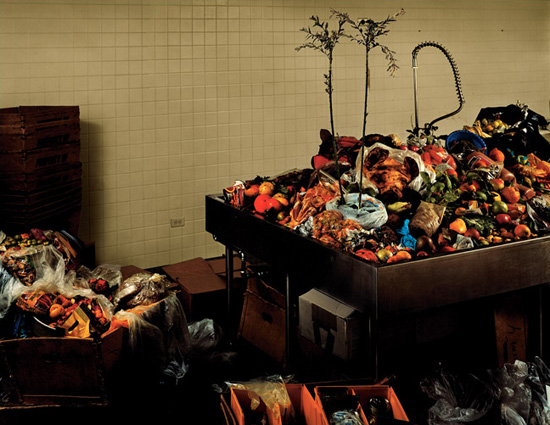
Taryn Simon will be taking us on a tour through the “weirdness hidden in plain sight — on our sidewalks, along our roadsides and in our public rituals and spectacles” next March in a solo exhibition at the Whitney Museum of American Art, and in a volume available later that summer.
If you can't make it to the exhibition or can't wait for the book, The New York Times Magazine has published some of Simon's photographs, including the one above taken at the U.S. Customs and Border Protection Contraband Room at the Kennedy International Airport: “Among the items seized from passengers in the 48 hours before the photograph was taken: African cane rats infested with maggots, Andean potatoes, Bangladeshi cucurbit plants, a pig’s head from South America.”
One wonders if these detention rooms might just be some of the most biologically diverse places in the lower 48 states.
Another photo takes a look inside the Avian Quarantine Facility New York Animal Import Center in Newburgh, New York. What we see caged are “African gray parrots and European finches, seized upon illegal importation into the U.S., in quarantine. Imported birds must undergo a 30-day mandatory quarantine in a U.S. Department of Agriculture animal-import facility. Before release, each bird is tested for avian influenza and exotic Newcastle disease.”
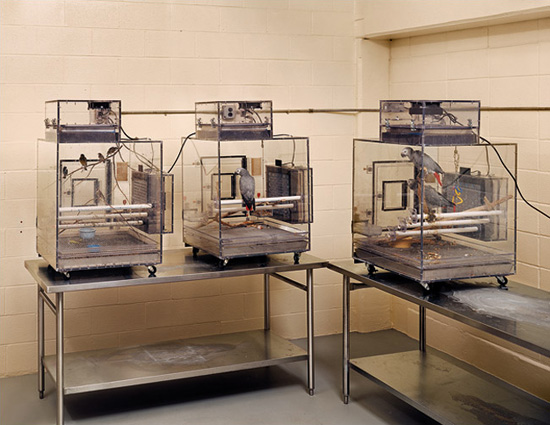
Again, seeing how empty the sky above Chicago is at the moment, one wonders if it's an ecological wasteland compared to these secret aviaries.
Living Dead
DHL Gardens
Tropicalia
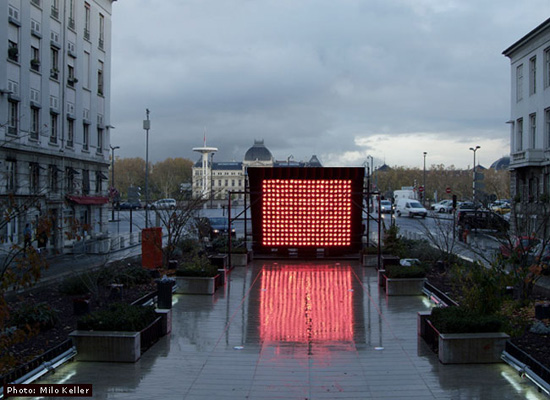
Considering that 1) public squares in northern climes generally turn lifeless during winter; 2) people become even deader once seasonal depression leads to suicides; and 3) landscape architects et al. are always looking for ways to improve the livability of urban landscapes — Perpetual (Tropical) SUNSHINE is thus worth investigating.
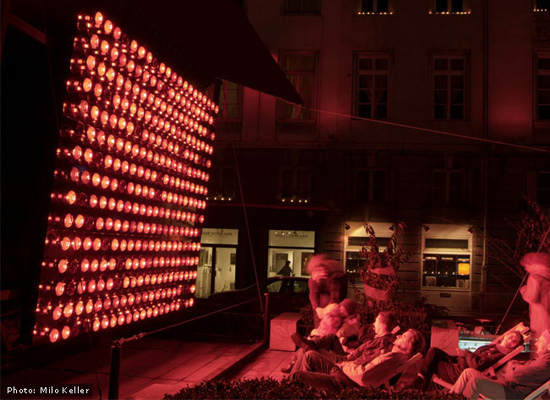
“This space is out of sync both temporally and climactically. A spatial screen, composed of 300 infrared light bulbs, transposes the state and image of a summer sun on the 23rd South parallel, thanks to live information transmitted by a network of weather stations all the Tropic of Capricorn and around the globe.
“Thus, the spectator can constantly track the path of the sun, thereby experiencing an abstract and never-ending, planetary form of day and of summer, across longitudes and time zones.”
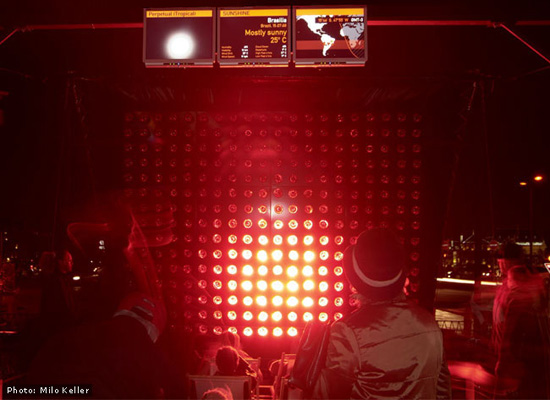
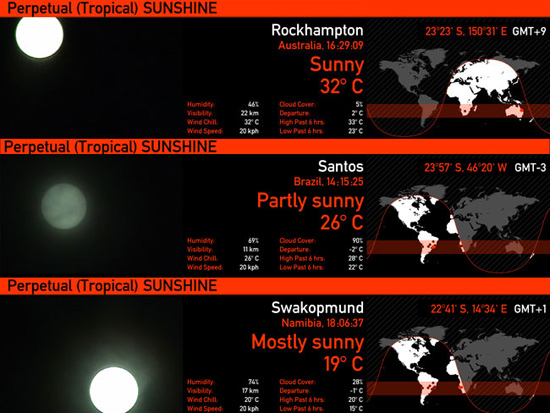
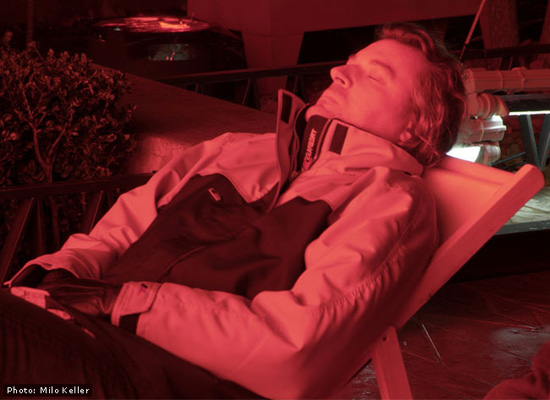
Next up: Millennium Park's LED-tiledCrown Fountain gets retrofitted into blazing Prozac towers by CDC-licenced landscape architects.
Let there be light!
The “45.5 Meteorite Craters Made by Humans on Their 45.5 Hundred Million Year Old Planet” Fountain
Word of the Day
Cosplay, which originated in Japan, is a combination of the words "costume" and "play." In cosplay, people dress as characters from Japanese animation, as well as graphic manga novels and video games. Cosplay can also refer to someone simply wearing a costume.
More Garden Pr0n
In our most self-indulgent mood here at Pruned Headquarters, we try to convince ourselves that preceding the march of graduates at the start of our convocation, which by the way took place at a park as per department tradition, was a Poliphilian triumph, as hyperfestive and exuberantly rousing and vividly surreal as required for such an occassion.
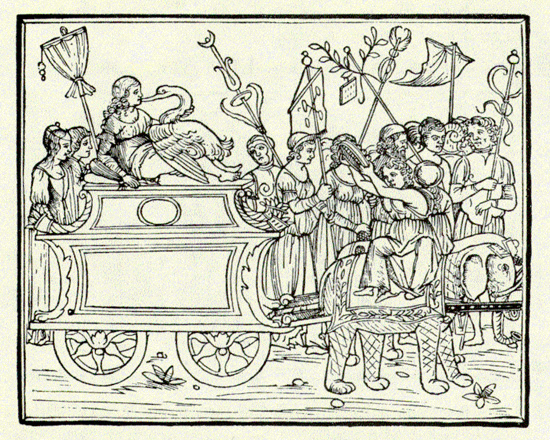
I saw upon this superb and triumphal vehicle a white swan in amorous embrace with Theseus's daughter, an illustrious nymph of unbelievable beauty. The swan was kissing her with its divine beak; its wings were down, covering the pare parts of the noble lady, as with divine and voluptuous pleasure the two of them united in their delectable sport, with the godlike swan positioned between her delicate snow-white thighs. She was lying comfortably on two cushions of cloth of gold, softly filled with finest wool and with all the appropriately sumptuous ornaments, and was dressed in a thin virginal dress of startlingly white silk and a weft of gold, elegantly adorned in suitable places with precious stones. Nothing was lacking to contribute to the increase of delight. This triumph possessed all the features that were described in the first one, and gave especial pleasure to the onlookers, who responded with praise and applause.
* * *
* *
*

I saw upon this superb and triumphal vehicle a white swan in amorous embrace with Theseus's daughter, an illustrious nymph of unbelievable beauty. The swan was kissing her with its divine beak; its wings were down, covering the pare parts of the noble lady, as with divine and voluptuous pleasure the two of them united in their delectable sport, with the godlike swan positioned between her delicate snow-white thighs. She was lying comfortably on two cushions of cloth of gold, softly filled with finest wool and with all the appropriately sumptuous ornaments, and was dressed in a thin virginal dress of startlingly white silk and a weft of gold, elegantly adorned in suitable places with precious stones. Nothing was lacking to contribute to the increase of delight. This triumph possessed all the features that were described in the first one, and gave especial pleasure to the onlookers, who responded with praise and applause.
* *
*
The National Mall Rescripted
If we are to believe that the National Park Service will take public comments seriously enough that glaringly brilliant suggestions to improve The National Mall will likely be implemented wholly or in parts, then here's your chance to affect how American history is presented and experienced.
Give feedback on these questions at the Public Comment Page here by 11:59PM on December 29.
Some of the questions may sound pedestrian at first. For instance:
But considering how the entire landscape is a minefield of signification and is the most contested territory in the entire Western Hemisphere, then seemingly mundane questions as whether or not there should be a dedicated jogging path or what text should be placed in a historical marker take on dizzyingly monumental consequence.
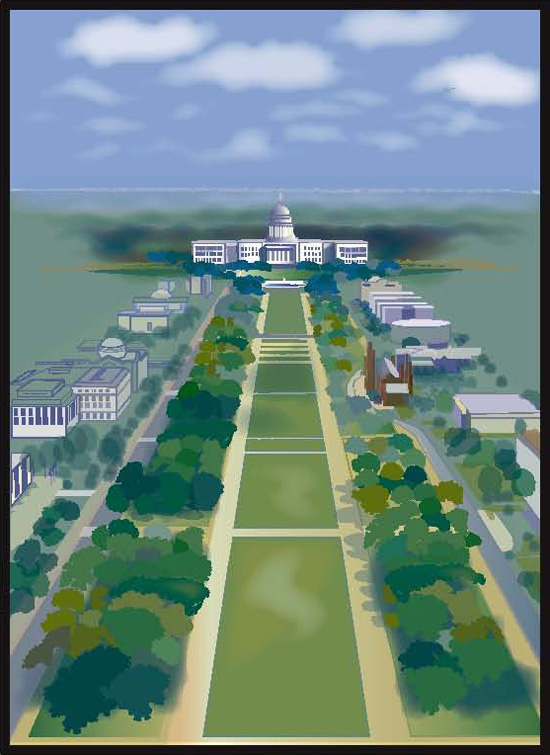
A view can be worth a thousand truths and a thousand lies.
Some fugitive thoughts: 1) Should all the bollards, concrete planters, and English ha-has littering the Mall, while not as aesthetically pleasing but nevertheless fantastically interesting (if not more so) as the annual cherry blossoms -- should they and all the other topographical imprints of the Global War on Terror be preserved if and when this war ever ends as a de facto national memorial? 2) What's the deal with all the tunnel-digging? and 3) Pruned has never been to Washington, D.C., so interested shadowy supranational corporate funders, contact us.
Give feedback on these questions at the Public Comment Page here by 11:59PM on December 29.
Some of the questions may sound pedestrian at first. For instance:
What should visitor facilities and sidewalk furnishings look like, or what character should they have?
What programs, activities, educational, and recreational opportunities do you want on the National Mall?
What should Pennsylvania Avenue National Historic Park look like, or what streetscape character should it have?
But considering how the entire landscape is a minefield of signification and is the most contested territory in the entire Western Hemisphere, then seemingly mundane questions as whether or not there should be a dedicated jogging path or what text should be placed in a historical marker take on dizzyingly monumental consequence.
A view can be worth a thousand truths and a thousand lies.
Some fugitive thoughts: 1) Should all the bollards, concrete planters, and English ha-has littering the Mall, while not as aesthetically pleasing but nevertheless fantastically interesting (if not more so) as the annual cherry blossoms -- should they and all the other topographical imprints of the Global War on Terror be preserved if and when this war ever ends as a de facto national memorial? 2) What's the deal with all the tunnel-digging? and 3) Pruned has never been to Washington, D.C., so interested shadowy supranational corporate funders, contact us.
Flying Carpets and Magical Carbon Emissions
NEW DELHI (Reuters) - India, considered to be one of the world's top polluters, said on Thursday that it was not doing any harm to the world's atmosphere despite increasing emissions of greenhouse gases.
Garden Pr0n

From the Gabinetto Secreto del Pruned, this woodcut from Hypnerotomachia Poliphili of “the rude image of the protector of gardens with all his decent and proper attributes” in a solemn rite, something which I've always thought my graduation ceremony had lacked.
Before this image, with great reverence and ancient rural and pastoral ritual, they were breaking a number of glass bottles or flasks, spattering the foaming blood of the sacrificed ass, warm milk and sparkling wine; and thus they made their libations with fruits, flowers, fronds, festivity and gaiety. Now behind this glorious triumph they led little old Janus, harness with ancient woodland ceremony, girt with strings and twisted tresses of many flowers. In rustic style they say nuptial and bawdy songs, and played their peasant instruments with the utmost joy and glory, celebrating with jumping, leaping and earnest applause, and with loud female voices.
We really needed Poliphilo at the convocation.
H-tastic!
You gotta see the smog in Houston today. It's beautiful. It reminds me of the popular bumper sticker that reads, "I came for the Rockets, but stayed for the sprawl."
Gut Flora

We learned a couple of things recently:
1) According to Science Magazine, “the adult human intestine is home to an almost inconceivable number of microorganisms. The size of the population—up to 100 trillion—far exceeds that of all other microbial communities associated with the body’s surfaces and is ~10 times greater than the total number of our somatic and germ cells.” Or to put it simply, they outnumber us.
And they may even be us, as this intestinal Amazonian ecosystem “provide[s] us with genetic and metabolic attributes we have not been required to evolve on our own, including the ability to harvest otherwise inaccessible nutrients.”
An organ within an organ, in other words.
And: 2) Sounding like a modern Mesopotamian domestication program, Yuichi Hiratsuka and his colleagues “have chemically harnessed bacteria to a micromotor so that they can make the device's rotor slowly turn.”
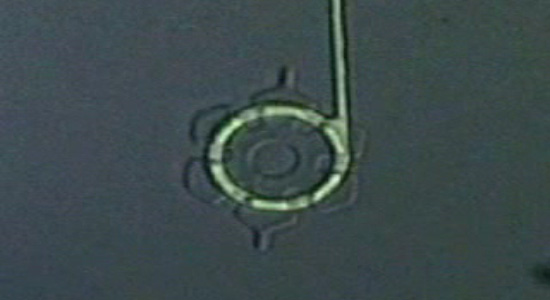
Pardon us while we quote nearly half of this article:
The machinery of each motor consists of two parts: a ring-shaped groove etched into a silicon surface, and a star-shaped, six-armed rotor fabricated from silicon dioxide that's placed on top of the circular groove. Tabs beneath the rotor arms fit loosely into the groove.
To prepare the bacterial-propulsion units, the team used a strain of the fast-crawling bacterium Mycoplasma mobile that was genetically engineered to crawl only on a carpet of certain proteins, including one called fetuin. The researchers laid down fetuin within the circular groove and coated the rotor with a protein called streptavidin.
The scientists then coated the micrometer-long, pear-shaped bacteria with a solution containing biotin, a vitamin that readily binds to streptavidin.
The team released the treated bacteria into the grooves in a way that sent them mostly in one direction around the circle. As the microbes passed each of a rotor's supporting ridges, their biotin-treated cell membranes clung to the streptavidin coating, causing tugs on the tabs and thereby turning the rotor.
Slow and weak, the rotors circle at about twice the speed of the second hand on a watch and generate only a ten-thousandth as much torque as typical electrically powered micromachines do. By using more bacteria, the scientists could boost the torque 100-fold, Hiratsuka predicts.
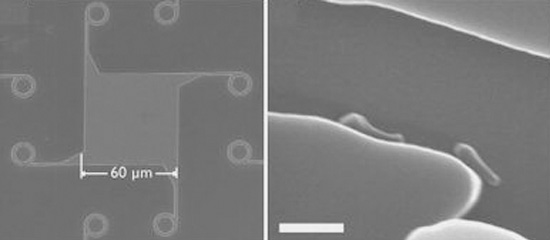
What should be done next is repurpose these micromachines for our own gut microbes. First encase them in a capsule. Once you've swallowed the whole lot, an instant zoo of mechanized anaerobic bioreactors blooms in your intestines. Harness the energy they produce to power, say, your iPod while you take a podcast tour through electrified or unelectrified locales.
Ingest a similarly encapsulated scanning electron microscope and project real-time photos as you ramble incomprehensibly through 30,000 years of agricultural terraforming at the next Pecha Kucha or Talk20. From post-lapsarian Eden to the rise of hydroengineered Mesopotamian civilizations; from massive European swamp-draining to the first transatlantic shipment of tomatoes and potatoes; from Jefferson's “no-nonsense (and topographically nonsensical)“ Land Survey grid to precision farming; from the staggering network of hydroelectric dams, reservoirs, levees, canals, and ditches irrigating the deserts of the West to the compact urban Vertical Farm; from the heroic American farmer in stoic communal with the sublime to the much maligned supranational industrial megafarmer; from John Deer to GMO rice; from Wheatfield to Not A Cornfield — all in precisely 6 minutes and 40 seconds.
Alternatively, you can program them so that you shit — well, what else — a shitty park. Your whole intestinal tract turned into a sort of Model T Ford assembly line.
Reprogram these external genetic apparatuses again and the designed metabolic pathway (e.g. indigestion, food poisoning) gets expressed epidermally as a garden.

Gut flora @ Wikipedia
Bouffant Topiary
Wake me up in 2008
US Weekly reports that Tori Spelling has been signed by Simon & Shuster for a memoir due out in April 2008.
Cold War National Park
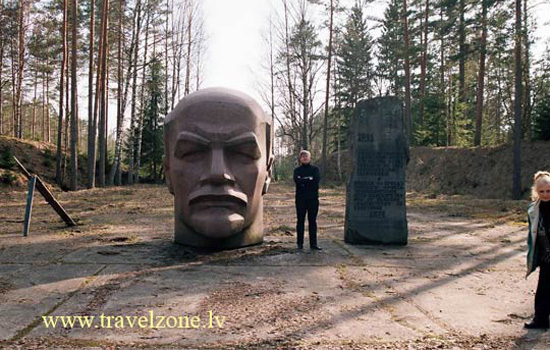
“At the height of the Cold War,” Deutsche Presse-Agentur tells us, “strategic missile bases such as Zeltini were among the most heavily-armed sites in the USSR. Surrounded by barbed wire, electric fences and minefields, they were so closely guarded that they terrified even their own personnel.”
Then history happened, and “now the bases built to defend a quarter of a billion Soviet citizens stand derelict in a country of just 2.3 million. Airfields, missile silos, bunkers and hangars are slowly vanishing under encroaching vegetation - a silent, damp, concrete no-man's land.” And may have completely folded back into the wilderness if it were not for some insistent Americans:
“One day an American observer asked me if we'd found the nuclear warhead store yet. I replied, 'What store?' So he took me for a drive into the woods, reading off a GPS navigator,” [former Soviet military engineer] Upmalis said.
“We found the hidden entry to a nuclear weapons dump behind a ruined building. The Americans knew about it from satellites, but nobody in Latvia knew anything about it,” he added.
But if this hotel is any evidence of Latvia's entrepreneurial spirit, these “ghost bases” may just become the country's most popular tourist destination.
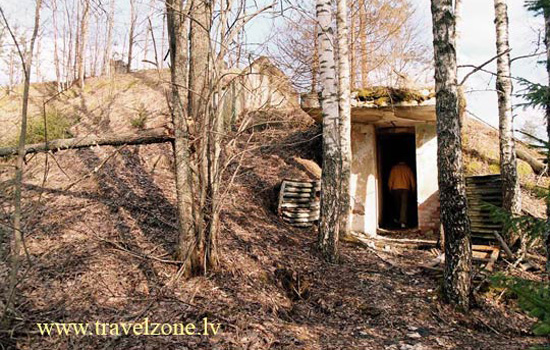
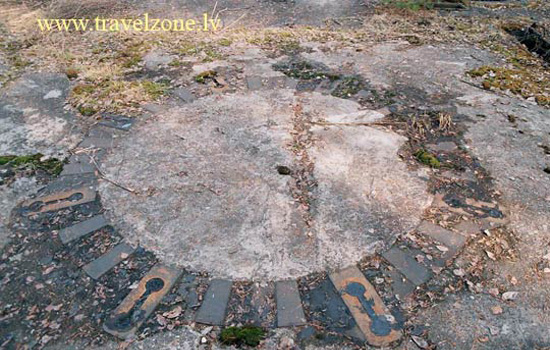
So to repeat: Mildewed missile silos. Subterranean bunkers. Minefields and pestilential swamps. Silent airfields and cavernous airplane hangers. Barbed wires. Electric fences. Arcadian birch-covered hills. GPS navigators. World War III launch pads. Munition dumps.
It's a landscape architect's paradise.
KGB Hotel
An old Soviet prison in Latvia has been converted into a hotel.
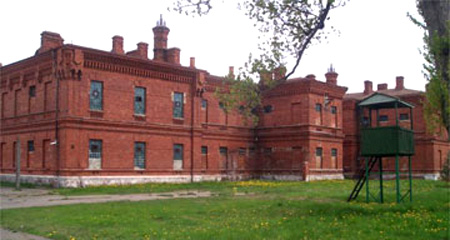
“This 'hotel',” writes Tim Bryan, “proudly bills itself as 'unfriendly, unheated, uncomfortable and open all year round'. But that's the point. A stay here is reality tourism writ large, a chance to experience at first hand (albeit handcuffed for part of the time) the brutal, degrading regime of a damp, rotting red-bricked naval jail built in 1905 to house the czar's mutinous sailors. New management took over in the 1970s: the KGB.”
So instead of a Presidential Suite with an ocean view, everyone will only have the choice of either solitary confinement or the interrogation room. Instead of pleasant greetings from a cheery staff, patrons will be welcomed with gun fire and barking orders from (former) Soviet prison guards. And instead of signing the guestbook, you'll be processed, photographed and given your arrest card.
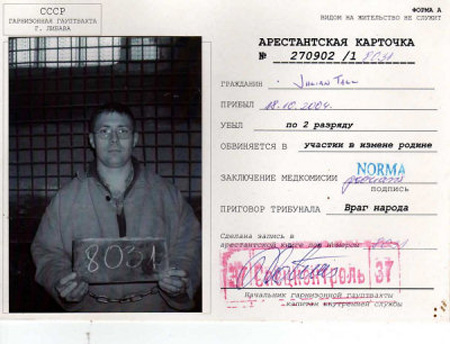
And if you want to make your experience even more(!) unique, simplycontact the management for information.
Then let us know what these “top secret” details are.

“This 'hotel',” writes Tim Bryan, “proudly bills itself as 'unfriendly, unheated, uncomfortable and open all year round'. But that's the point. A stay here is reality tourism writ large, a chance to experience at first hand (albeit handcuffed for part of the time) the brutal, degrading regime of a damp, rotting red-bricked naval jail built in 1905 to house the czar's mutinous sailors. New management took over in the 1970s: the KGB.”
So instead of a Presidential Suite with an ocean view, everyone will only have the choice of either solitary confinement or the interrogation room. Instead of pleasant greetings from a cheery staff, patrons will be welcomed with gun fire and barking orders from (former) Soviet prison guards. And instead of signing the guestbook, you'll be processed, photographed and given your arrest card.

And if you want to make your experience even more(!) unique, simply
Then let us know what these “top secret” details are.
79 Recommendations for US Soccer Policy
Dear U.S. Soccer Federation president Sunil Gulati,
I hold you personally responsible for Juergen Klinsmann taking himself out of consideration for coach of the U.S. soccer team. I guess I’ll dig out my Les Blues gear again in 2010.
I hold you personally responsible for Juergen Klinsmann taking himself out of consideration for coach of the U.S. soccer team. I guess I’ll dig out my Les Blues gear again in 2010.
Yellow journalism at its worst.
NEW YORK - (AP) Britney Spears's recent nights out with party girls Paris Hilton and Lindsay Lohan — and those uncensored, R-rated crotch shots that were splashed across the Web — drew disapproval from her fans and other Spears watchers.
Disapproval? Are you kidding me?
Disapproval? Are you kidding me?
Unread
Welcome new readers! No doubt you've come by way of Fimoculous. Please make yourself comfortable as you peruse our archives. Grab a six-pack of Meta-Botanical Bitter, courtesy of BLDGBLOG, or mix your own cocktail, and take as much from the canapé tray as your clicked-out fingers can grab. But if you're pressed for time, here are ten semi-randomly selected posts, which hopefully will entice you to stay longer.
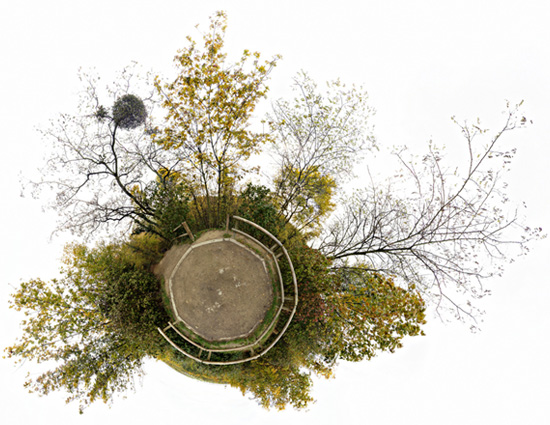
One thousand and one Mississippi Rivers! (x2)
A pilgrimage to necro-planetariums!
Petting at the Transgenic Zoo!
Versailles in the Pacific!
A wound in the geological bowels of the earth!
The 2018 Winter Olympics in Chicago!
Landscape architects as landscapes!
Busby Berkeley's Lost Musical Trilogy: Adventures in the Mantle; Adventures in the Empty Quarter; and Adventures on the Continental Shelf!
Dugway Proving Ground!
TerraServer appropriated as a guerilla tactic, and Google Maps as acts of civil disobedience!
Of tumuli, moonrises, and a nice Par 3!
The iconography of extraterrestrial landscapes: or, Future Jovian Israeli-Palestinian warfare as a function of geomorphological abstraction!
*
So maybe that wasn't exactly 10 posts. And the following aren't even in our archives; they are among our favorite blogs: BLDGBLOG, Subtopia, and The Dirt.
In any case, thanks for visiting! And come often as you like!

One thousand and one Mississippi Rivers! (x2)
A pilgrimage to necro-planetariums!
Petting at the Transgenic Zoo!
Versailles in the Pacific!
A wound in the geological bowels of the earth!
The 2018 Winter Olympics in Chicago!
Landscape architects as landscapes!
Busby Berkeley's Lost Musical Trilogy: Adventures in the Mantle; Adventures in the Empty Quarter; and Adventures on the Continental Shelf!
Dugway Proving Ground!
TerraServer appropriated as a guerilla tactic, and Google Maps as acts of civil disobedience!
Of tumuli, moonrises, and a nice Par 3!
The iconography of extraterrestrial landscapes: or, Future Jovian Israeli-Palestinian warfare as a function of geomorphological abstraction!
So maybe that wasn't exactly 10 posts. And the following aren't even in our archives; they are among our favorite blogs: BLDGBLOG, Subtopia, and The Dirt.
In any case, thanks for visiting! And come often as you like!
Who's at fault: Chris Simms or Greg Davis?
Texas's non-conference 2007 schedule: Arkansas State, TCU, Central Florida and Rice. Boooo!
Speaking of France: Book Review
Sixty Million Frenchmen Can't Be Wrong: Why We Love France but Not the French by Jean-Benoit Nadeau and Julie Barlow.
The French smoke, drink and eat more fat than anyone in the world, yet they live longer and have fewer heart problems than Americans. They take seven weeks of paid vacation per year, yet have the world’s highest productivity index. From a distance, modern France looks like a riddle. But up close, it all makes sense. Sixty Million Frenchmen Can’t Be Wrong shows how the pieces of the puzzle fit together.
Decrypting French ideas about land, food, privacy and language, the authors weave together the threads of French society—from centralization and the Napoleonic code to elite education and even street protests—giving us, for the first time, an understanding of France and the French.
My Review: Two thumbs up and raise the tricolor.
The French smoke, drink and eat more fat than anyone in the world, yet they live longer and have fewer heart problems than Americans. They take seven weeks of paid vacation per year, yet have the world’s highest productivity index. From a distance, modern France looks like a riddle. But up close, it all makes sense. Sixty Million Frenchmen Can’t Be Wrong shows how the pieces of the puzzle fit together.
Decrypting French ideas about land, food, privacy and language, the authors weave together the threads of French society—from centralization and the Napoleonic code to elite education and even street protests—giving us, for the first time, an understanding of France and the French.
My Review: Two thumbs up and raise the tricolor.
I will be contacting my local cable provider.
PARIS - France goes head-to-head with CNN and the BBC from Wednesday with the launch of its state-funded 24/7 news channel, part of President Jacques Chirac's efforts to make his country's voice heard.
France 24 will broadcast two channels, one in French and the other mostly in English.
"Our mission is to cover worldwide news with French eyes," CEO Alain de Pouzilhac told AP Television News. He said the channel will emphasize in-depth reporting and debate, culture and "l'art de vivre" — the art of living.
France 24 will broadcast two channels, one in French and the other mostly in English.
"Our mission is to cover worldwide news with French eyes," CEO Alain de Pouzilhac told AP Television News. He said the channel will emphasize in-depth reporting and debate, culture and "l'art de vivre" — the art of living.
Running count
Since the Ohio State-Florida game was announced, I've seen two Pat Forde articles criticizing the BCS, one by Gene Wojciechowski, and one by Richard Justice. All of the articles came to the same conclusion: The BCS sucks because it sucks. That's four articles, and I haven't really been looking. I wonder what that number would be if Michigan had finished ahead of Florida. I'll take a wild guess and say four.
Kudos to Bomani Jones for his level-headed article about the BCS on ESPN's Page 2. I'm sure Jones will be fired any minute now.
Kudos to Bomani Jones for his level-headed article about the BCS on ESPN's Page 2. I'm sure Jones will be fired any minute now.
The Machine
This is ATLAS, one of the major particle detectors for CERN's Large Hadron Collider being constructed underground in the Swiss Alps. The eight toroidal coils you see form the largest superconducting magnet ever built.

Called affectionately as The Machine, it will become fully operational in November 2007. And when it does, Wired tells us, physicist will try to answer some of the most puzzling questions about the workings of the cosmos.
Why do things have mass?
What is dark matter, that unknown stuff that makes up 96% of the Universe?
And why is there more matter than antimatter?
And barring the creation of micro black holes, strangelets, and magnetic monopoles, all of which could trigger the destruction of the earth, even the entire universe, scientists would also want to find out why gravity is such a weak force.
More intriguingly, they will try seek out evidence for the existence of extra dimensions.
In other words, nothing less than the fundamental construct of Nature and the landscape architecture of reality.
Admittedly, we're curious to know if all those scientists — all 1800 of them from 165 universities and laboratories representing 35 countries — may also want to find out if the Barrel Toroid can levitate a tree. A grove of exiled palm trees magnetically deterrestrialized.

Since nonsuperconducting objects have been shown that they can indeed be levitated, why not throw in some shrubs as well. And self-powered lighting fixtures; some artificial turf and mildly meditative Zen boulders; a few dozen rabbits, cute or otherwise; anti-gravity hydrology; and of course, the all-important signage: “Warning: If Not Rapture, May Cause Death.”
And after you push a few buttons, flick one or two switches and drain Europe of all of its electricity, your floating garden then goes on an endless subterranean ringed journey. It's the new $12 billion dollar theme park.
Or The Tenth Circle of Hell.
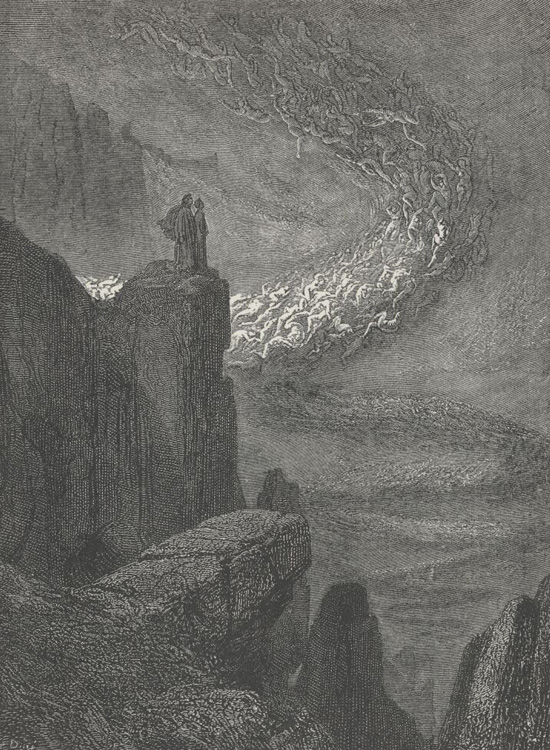
Which is reserved for landscape architects.
And by blasphemies, Dante meant producing absolutely boring landscape architecture.

Called affectionately as The Machine, it will become fully operational in November 2007. And when it does, Wired tells us, physicist will try to answer some of the most puzzling questions about the workings of the cosmos.
Why do things have mass?
What is dark matter, that unknown stuff that makes up 96% of the Universe?
And why is there more matter than antimatter?
And barring the creation of micro black holes, strangelets, and magnetic monopoles, all of which could trigger the destruction of the earth, even the entire universe, scientists would also want to find out why gravity is such a weak force.
More intriguingly, they will try seek out evidence for the existence of extra dimensions.
In other words, nothing less than the fundamental construct of Nature and the landscape architecture of reality.
Admittedly, we're curious to know if all those scientists — all 1800 of them from 165 universities and laboratories representing 35 countries — may also want to find out if the Barrel Toroid can levitate a tree. A grove of exiled palm trees magnetically deterrestrialized.

Since nonsuperconducting objects have been shown that they can indeed be levitated, why not throw in some shrubs as well. And self-powered lighting fixtures; some artificial turf and mildly meditative Zen boulders; a few dozen rabbits, cute or otherwise; anti-gravity hydrology; and of course, the all-important signage: “Warning: If Not Rapture, May Cause Death.”
And after you push a few buttons, flick one or two switches and drain Europe of all of its electricity, your floating garden then goes on an endless subterranean ringed journey. It's the new $12 billion dollar theme park.
Or The Tenth Circle of Hell.

Which is reserved for landscape architects.
Now 'gin the rueful wailings to be heard.
Now am I come where many a plaining voice
Smites on mine ear. Into a place I came
Where light was silent all. Bellowing there groan'd
A noise as of a sea in tempest torn
By warring winds. The stormy blast of hell
With restless fury drives the spirits on
Whirl'd round and dash'd amain with sore annoy.
When they arrive before the ruinous sweep,
There shrieks are heard, there lamentations, moans,
And blasphemies 'gainst the good Power in heaven.
And by blasphemies, Dante meant producing absolutely boring landscape architecture.
GPS Pigeons

Conceived by Beatriz da Costa, a professor of arts, computation, and engineering at the University of California, Irvine, PigeonBlog “enlists homing pigeons to participate in a grassroots scientific data gathering initiative designed to collect and distribute information about air quality conditions to the general public. Pigeons are equipped with custom-built miniature air pollution sensing devices enabled to send the collected localized information to an online server without delay. Pollution levels are visualized and plotted in real-time over Google’s mapping environment, thus allowing immediate access to the collected information to anyone with connection to the Internet.”
So rather than remaining an urban nuisance, pigeons coalesce into a network of ambient monitoring devices.
Which makes one wonder what other sort of urban animals can be recruited as bloggers, letting us know the particulars of their day, uploading mobile cam photos to Flickr of street scenes or rush hour traffic on the freeways or that four-alarm fire in downtown, all done in real-time. Can we soon expect stray cats and dogs, sewer rats, and cockroaches to be thought of as critical infrastructure rather than something to be designed out of the landscape?
Animal Vegetable Video
Clean Sheet Proposal
ESPN columnist Pat Forde revealed in his Sunday column that college football’s Bowl Championship Series (BCS) is “screwed up” and amounts to “haphazard guesswork at the 11th hour.” Thanks, Pat. You must be exhausted after such grueling journalistic analysis.
Over the next month I’ll keep a running count of how often I hear or read that the BCS sucks. I’ll also keep track of the number of proposed solutions. For the record, I don’t necessarily have a problem with the BCS, nor do I have a problem with the lack of a playoff. Those are two entirely different things, mind you, though most people don’t understand the difference. Sorry if I’ve lost you, but bear with me. Anyhow, I do think a playoff would be incredibly exciting and I’d love to see it happen. But as long as we’re in the land of what if, we might as well revamp college football from the ground up.
Here’s my suggestion: Form a league composed of the top 36 college football teams divided into six divisions of six teams each. Each team plays five divisional games and seven non-divisional games for a total of twelve regular season games. The top twelve teams qualify for the playoffs, with the top four teams receiving first round byes. The top two teams receive home field advantage until the Championship Game, which is played at a rotating neutral site. Playoff teams are determined by overall record, and divisional champions do not automatically qualify for the playoffs. The tie breaker for determining playoff qualification and seeding is head-to-head record followed by strength of schedule.
At the end of the season, the bottom four teams are relegated to the second tier, and the top four teams from the second tier are promoted into the league for the following season.
Divisions, which are realigned each year due to relegation, are created primarily for maintaining traditional regional rivalries. The divisions are also balanced to an extent for strength of schedule based on last year’s results. Disparities in divisional strength of schedule will be balanced with the non-divisional schedule. For example, if one division is relatively stronger than the others, the teams in that division will play easier non-divisional games. Obviously, scheduling for strength of schedule in college football is not an exact science. However, the idea is to make each team’s schedule relatively equal in difficulty. Over the course of the season, that goal can be achieved. Non-divisional games will also be scheduled to maintain traditional rivalries. For instance, the USC-Notre Dame game will remain on the schedule and Texas would still face Oklahoma even if they are not in the same division in a given season.
Although the teams in the league will change from year to year, determining which teams to place in the league at the outset is important for many reasons. The criteria would include the program's success (recent and historical), television market, stadium size and fan base, and traditional significance in college football. I will form a committee to determine the initial 36 teams, and I will chair the committee. The bribes and kickbacks will make the IOC blush. For illustrative purposes only, I have chosen teams based only on the 2006 Sagarin rankings. Using the Sagarin rankings through the end of the 2006 regular season to determine the top 36 teams, the 2007 league would be as follows:
Pacific Division
Hawaii
Southern California
BYU
UCLA
Oregon State
Washington State
Western Division
Arizona State
Boise State
Cal
Oregon
Arizona
TCU
Central Division
Texas
Oklahoma
Texas A&M
Wisconsin
Nebraska
Arkansas
Midwest Division
Ohio State
Michigan
Penn State
Notre Dame
Rutgers
Boston College
Southeast Division
Florida
LSU
Tennessee
Georgia
South Carolina
Auburn
Atlantic Division
Wake Forest
Virginia Tech
Clemson
Louisville
Georgia Tech
West Virginia
Texas’s schedule would be as follows:
Tennessee
@ Wisconsin
Arkansas
@ Michigan
Auburn
Georgia Tech
@ BYU
UCLA
@ Nebraska
Oklahoma (Texas/OU would almost certainly be home and home.)
@ Oregon State
@ Texas A&M
Over the next month I’ll keep a running count of how often I hear or read that the BCS sucks. I’ll also keep track of the number of proposed solutions. For the record, I don’t necessarily have a problem with the BCS, nor do I have a problem with the lack of a playoff. Those are two entirely different things, mind you, though most people don’t understand the difference. Sorry if I’ve lost you, but bear with me. Anyhow, I do think a playoff would be incredibly exciting and I’d love to see it happen. But as long as we’re in the land of what if, we might as well revamp college football from the ground up.
Here’s my suggestion: Form a league composed of the top 36 college football teams divided into six divisions of six teams each. Each team plays five divisional games and seven non-divisional games for a total of twelve regular season games. The top twelve teams qualify for the playoffs, with the top four teams receiving first round byes. The top two teams receive home field advantage until the Championship Game, which is played at a rotating neutral site. Playoff teams are determined by overall record, and divisional champions do not automatically qualify for the playoffs. The tie breaker for determining playoff qualification and seeding is head-to-head record followed by strength of schedule.
At the end of the season, the bottom four teams are relegated to the second tier, and the top four teams from the second tier are promoted into the league for the following season.
Divisions, which are realigned each year due to relegation, are created primarily for maintaining traditional regional rivalries. The divisions are also balanced to an extent for strength of schedule based on last year’s results. Disparities in divisional strength of schedule will be balanced with the non-divisional schedule. For example, if one division is relatively stronger than the others, the teams in that division will play easier non-divisional games. Obviously, scheduling for strength of schedule in college football is not an exact science. However, the idea is to make each team’s schedule relatively equal in difficulty. Over the course of the season, that goal can be achieved. Non-divisional games will also be scheduled to maintain traditional rivalries. For instance, the USC-Notre Dame game will remain on the schedule and Texas would still face Oklahoma even if they are not in the same division in a given season.
Although the teams in the league will change from year to year, determining which teams to place in the league at the outset is important for many reasons. The criteria would include the program's success (recent and historical), television market, stadium size and fan base, and traditional significance in college football. I will form a committee to determine the initial 36 teams, and I will chair the committee. The bribes and kickbacks will make the IOC blush. For illustrative purposes only, I have chosen teams based only on the 2006 Sagarin rankings. Using the Sagarin rankings through the end of the 2006 regular season to determine the top 36 teams, the 2007 league would be as follows:
Pacific Division
Hawaii
Southern California
BYU
UCLA
Oregon State
Washington State
Western Division
Arizona State
Boise State
Cal
Oregon
Arizona
TCU
Central Division
Texas
Oklahoma
Texas A&M
Wisconsin
Nebraska
Arkansas
Midwest Division
Ohio State
Michigan
Penn State
Notre Dame
Rutgers
Boston College
Southeast Division
Florida
LSU
Tennessee
Georgia
South Carolina
Auburn
Atlantic Division
Wake Forest
Virginia Tech
Clemson
Louisville
Georgia Tech
West Virginia
Texas’s schedule would be as follows:
Tennessee
@ Wisconsin
Arkansas
@ Michigan
Auburn
Georgia Tech
@ BYU
UCLA
@ Nebraska
Oklahoma (Texas/OU would almost certainly be home and home.)
@ Oregon State
@ Texas A&M
Biocidal Terrain
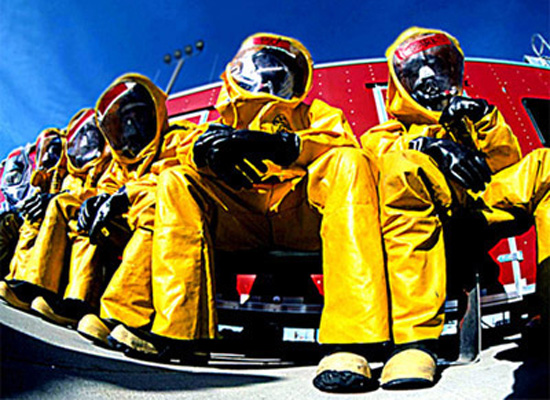
“A surface coated in spiky polymer molecules destroys the flu virus at a touch,” Scientific American reported last month. This nontoxic substance does so by “gouging holes in a microbe's cell wall and spilling out its contents. The polymer molecules stay rigid because they are all positively charged and therefore repel each other, like strands of hair standing on end from a static charge. The spikes have sufficiently few charges, however, that they can breach bacterial walls, which repel strongly charged molecules. The polymer probably neutralizes flu because the virus has an envelope around it suitable for spearing.”
As interesting as the image of viruses getting speared and eviscerated may sound, what is even more interesting is the fact that this “experimental substance, which can be applied like paint, might complement other germ control methods used in public spaces such as hospitals and airplanes.” So if the oft-forecasted influenza pandemic should come, those same public spaces will function more as biohazard filters instead of as urban vectors for the virus.
Even doubly more interesting is contemplating what possible landscapes this spiky paint and those “other germ control methods” might bring about. In fact, one cannot help but be giddy when one is reminded of the ubiquity of bollards, concrete planters, ha-has, and other topographical imprints of the Global War on Terror on our public spaces. And this despite their generally objectionable aesthetics.
So setting aside for now any and all skepticism of the polymer's ability to significantly mitigate some future species-ending plague, might we expect biocidal fountains to proliferate soon: like CCTV cameras, littering your daily commute, and misting you from the moment you exit your house till you finally settle down on your office chair? How about so-called respiratory oases retrofitted for the Ebola virus? Or benches, bathroom doorknobs, subway handrails, playground swings, elevator cars, and even nauseatingly boring public sculptures fostering an entirely new level of public intimacy? Etc.
Instead of barricading ourselves in our homes and bedchambers at the first sound of an ominous cough, we may prefer to seek shelter in our public spaces. Instead of avoiding it, we seek the crowd.
Subscribe to:
Posts (Atom)
